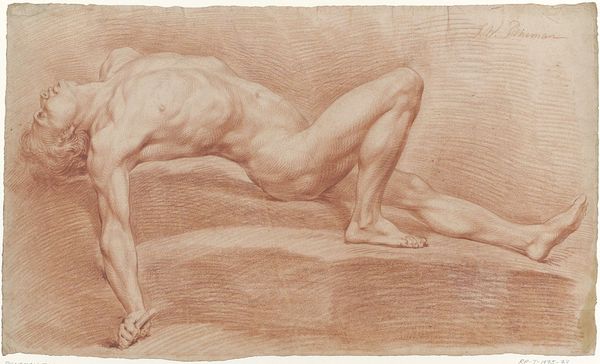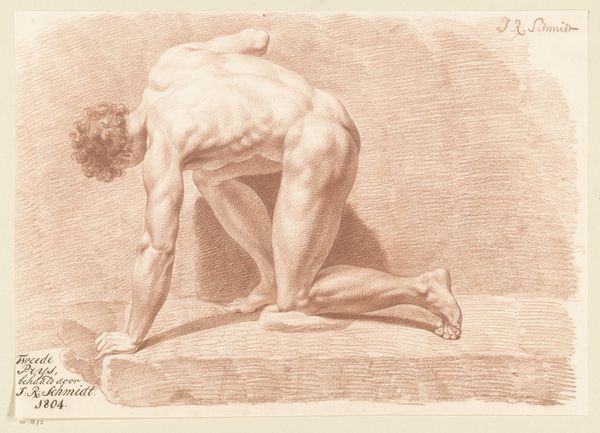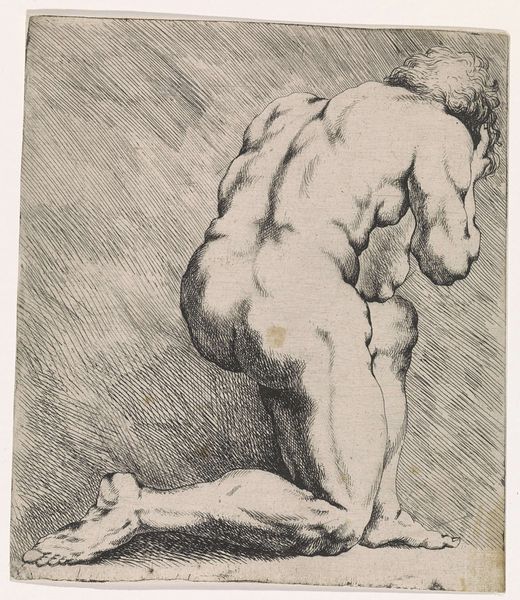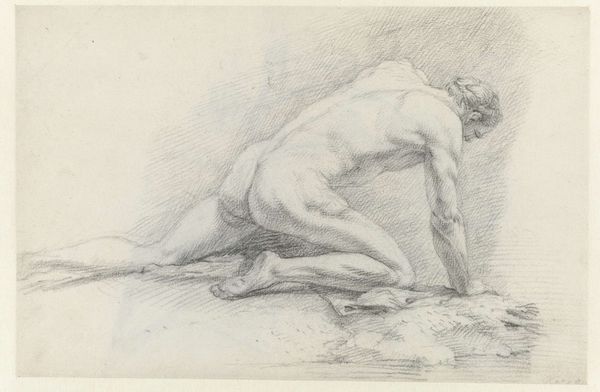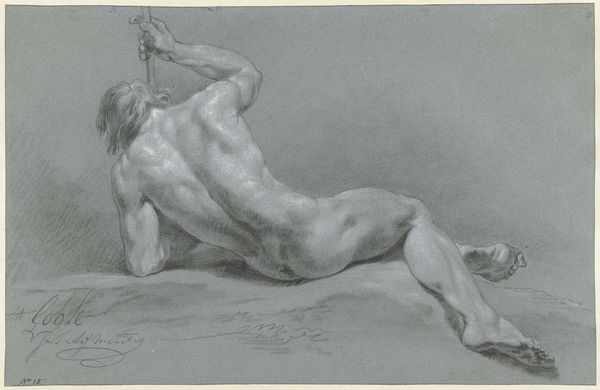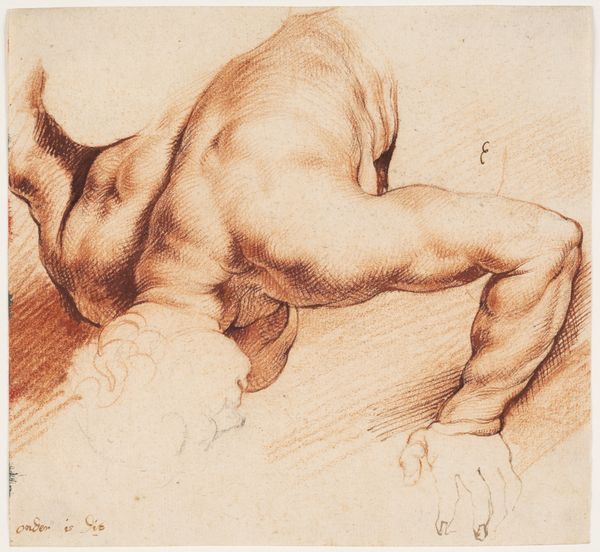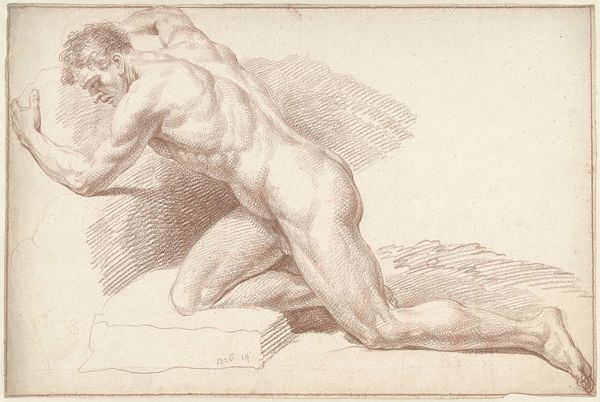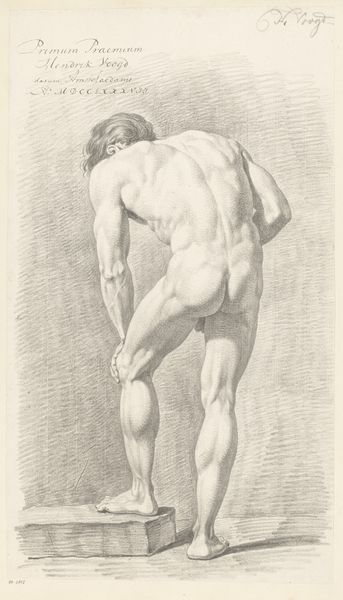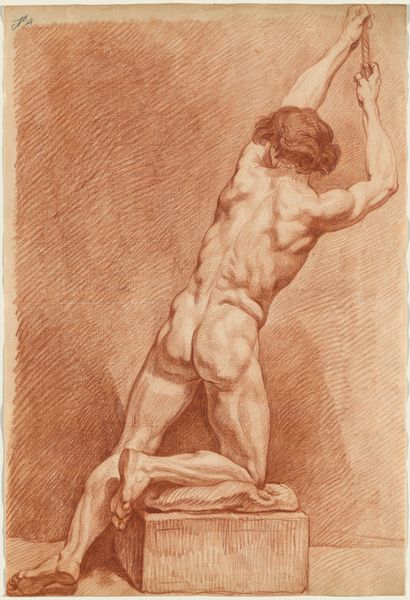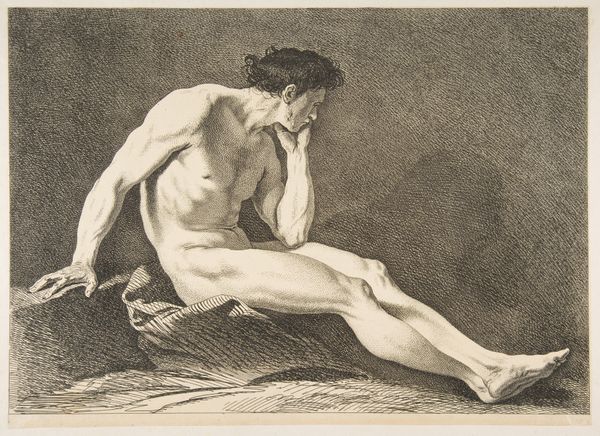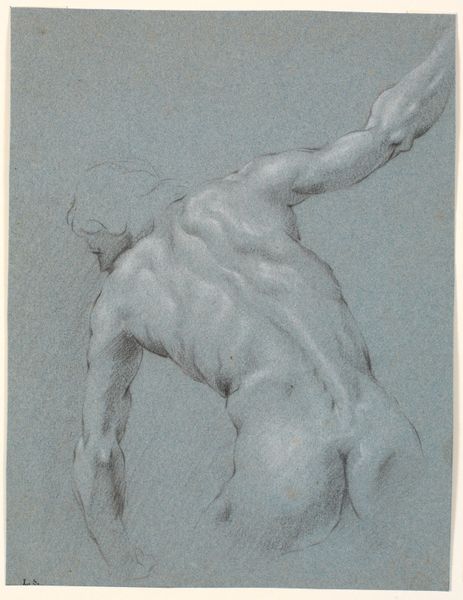
drawing, charcoal
#
drawing
#
charcoal drawing
#
charcoal
#
academic-art
#
nude
#
realism
Dimensions: height 414 mm, width 573 mm
Copyright: Rijks Museum: Open Domain
Jan Willem Pieneman created this red chalk drawing of a standing male nude in the Netherlands, sometime in the late 18th or early 19th century. Nude studies like this were an integral part of academic art training in Europe. Grounded in the traditions of the Italian Renaissance, art academies taught students to draw the human figure as a foundation for history painting, which was considered the most elevated genre. The male nude embodied ideals of beauty, strength, and heroism, all qualities to be admired and emulated in society. Pieneman himself directed the Royal Academy of Art in Amsterdam. This drawing would have been created and used in the classroom as a reference for his students. By studying the figure, artists sought to master anatomy and form. But beyond technique, they absorbed a worldview that equated the male body with power and virtue. Art historians look to archival sources, such as student notebooks and class schedules, to better understand how art academies shaped artistic values and social hierarchies. The meaning of art is so often found in its original setting.
Comments
No comments
Be the first to comment and join the conversation on the ultimate creative platform.
